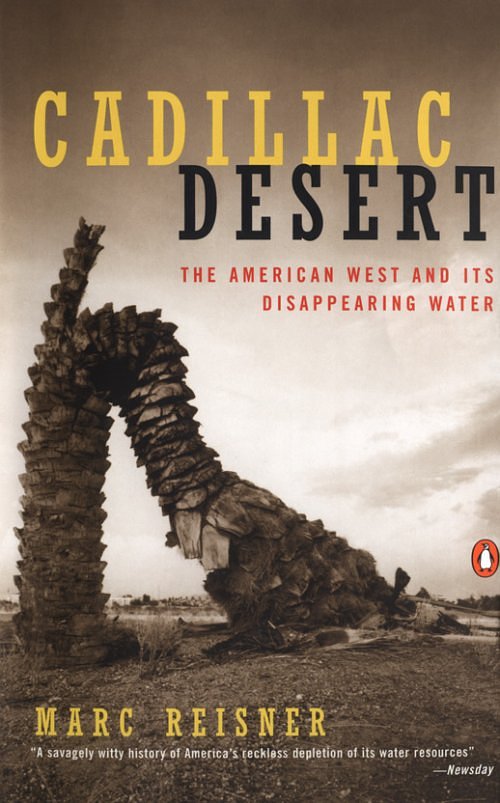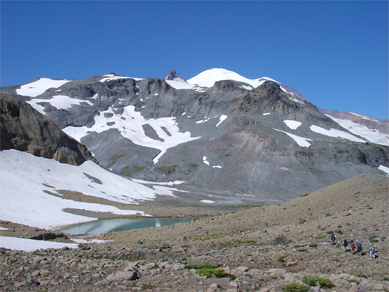"The good news is that we have enough groundwater, at current levels of annual replenishment, to double our state’s population before we start drawing down groundwater levels. The bad news is that Arizona will double its population, and start drawing down the groundwater table beyond annual replenishment, in just 20 years and Arizona has absolutely no plan to solve this problem."
This is a great article b
y John Munger about the water crisis down in Arizona. I think a lot of us like to have faith that policymakers behind closed doors have a plan, but the truth is that politics is about the next few years, not the next few decades. Very few of the people making decisions in Arizona will be in office twenty years from now, and in the meantime, constituents want cheap, plentiful water, and the businesses that depend on it.
 |
Photo credit: http://ow.ly/mfd74
|
According to a recent Gallup poll, Americans still prioritize the economy over the environment, as they almost always have. Economic growth is important, but short-term payoffs shouldn't trump long-term resource responsibility. To paraphrase Al Gore, there won't be an economy if there is not first an earth upon which it can thrive. Environmental sustainability is imperative for long-term economic growth, or else we will start to feel the consequences of using up our resources too fast.
To put that into terms that might directly apply to Arizona, the state might be fine for the next few decades, but if they don't ramp up water conservation efforts now there is going to be a substantial shock when demand outweighs supply. What kind of business climate would that be? What good is cheap land without water rights? Environmental responsibility is economic responsibility, but the problem is the lapse in benefits. It is much more politically popular to go with the policy with immediate payoffs, than to follow an approach of caution and austerity.
But Arizona has got problems whether it would like to address them or not.
Here are a few thoughts I have. Start small, because there's still room to get the policy right over the next few years. But start now. Slowly build a culture of water awareness and conservation, much like San Antonio has done (a city with over twice the rainfall of Phoenix).
Population growth is high in Arizona, perhaps artificially high - which is not good if the land can't sustain these people in the long run. Another classic example of short-term gains versus long-term consequences. As long as there is a gap between the two, we will continue to pursue unwise growth policies. Something must be done to reduce this gap. A boom in new housing construction creates jobs and stimulates the economy, but perhaps because so far it has not experienced the true long-term cost of building on arid land. If proving a 100-year water supply isn't enough to slow new housing developments, perhaps proving a 200-year supply is appropriate. After all, Arizona will still be around in 200 years; rather, it will if we exercise prudence with our water resources.
 |
Photo credit: http://ow.ly/mfdef
|
While I believe lawns should be discouraged in Colorado, they should be outright illegal in Arizona. Make an exception for public parks, and pursue an urban planning policy that emphasizes shared green space, rather than private backyard turf. Create more neighborhood dog runs, since pets are a common reason for owning a large backyard. Smaller yards and more park space will allow more efficient irrigation. While density is a foreign word to the existing Phoenix suburbs, eventually the city's sprawl will reach Prescott. Before this happens, city planners will have the opportunity to promote higher levels of density, and diminish some of Phoenix's reputation as a suburban strip mall.
Raise the price of water. Water rates are simply too low in Arizona, which has created a distortion. The state's water utilities, such as the Salt River Project, operate at a loss to provide cheap water for farmers and residents using taxpayer money to pay for the electricity needed to deliver the water, often at prices a fraction of the cost. If Arizona is going to use taxpayer money to influence water policy, it should be to conserve it, not use it more cheaply. These water subsidies would be better spend in installing drip irrigation for farmers - the state's largest water consumers. So much irrigation evaporates in the hot desert sun that farmers are forced to pump out huge amounts just to attain necessary moisture levels. Drip irrigation would reduce evaporation and make agriculture more efficient, having a substantial effect on the state's consumption rates.
Furthermore, Arizona needs to get serious about xeriscaping. While some residents will get rid of their lawns just after the government seizes their guns, many more would be open to xeriscape if the conversion weren't so expensive. Of course, raising the price of water would help make xeriscaping a more financially viable option. But the city should provide incentives and rebates to residents who reduce the need for yard irrigation, to make a difference on the large scale (rather than depend on the actions of a few water-conscious families). Same with retrofitting. And metering - much like owning a scale, this lets a household see how behavior patterns affect the overall water usage. Many incentives for household water conservation exist, but they need to be multiplied by ten.
Arizona is not a lost cause - there is plenty of time to reverse the collision course of population growth and water security. The state needs to even out the playing field by ending water subsidies, which have led to unsustainable rates of population growth and existing water consumption. This would be a step toward reducing the gap between short-term gains and long-term consequences.















